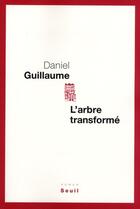Résumé:
We present an analysis of seismicity rate variations during doublets of large earthquakes. We focus on aftershocks localized in the vicinity of the 1st mainshock rupture zone in order to investigate how the 2nd one modifies this activity. We studied two particular doublets: the Izmit-Düzce... Voir plus
We present an analysis of seismicity rate variations during doublets of large earthquakes. We focus on aftershocks localized in the vicinity of the 1st mainshock rupture zone in order to investigate how the 2nd one modifies this activity. We studied two particular doublets: the Izmit-Düzce sequence in 1999, and the icelandic doublet of June 2000. This led us to conclude that triggering of activity after the 2nd mainshocks of doublets can take place in regions that did not undergo static stress loading, with a preference for those linked with geothermal activity. The temporal decay of these reactivations does not systematically follow the Omori law, as quiescences may appear after a delay of days to months. We also studied global properties of earthquake doublets and showed that doublets may simply be described with usual laws of seismicity (i.e., Omori-Utsu and Gutenberg-Richter laws). Finally, average aftershock production following 2nd mainshocks of doublets appears to be equivalent to the superposition of two typical aftershock production following single mainshocks, contrary to observations from regional studies.
Donner votre avis















